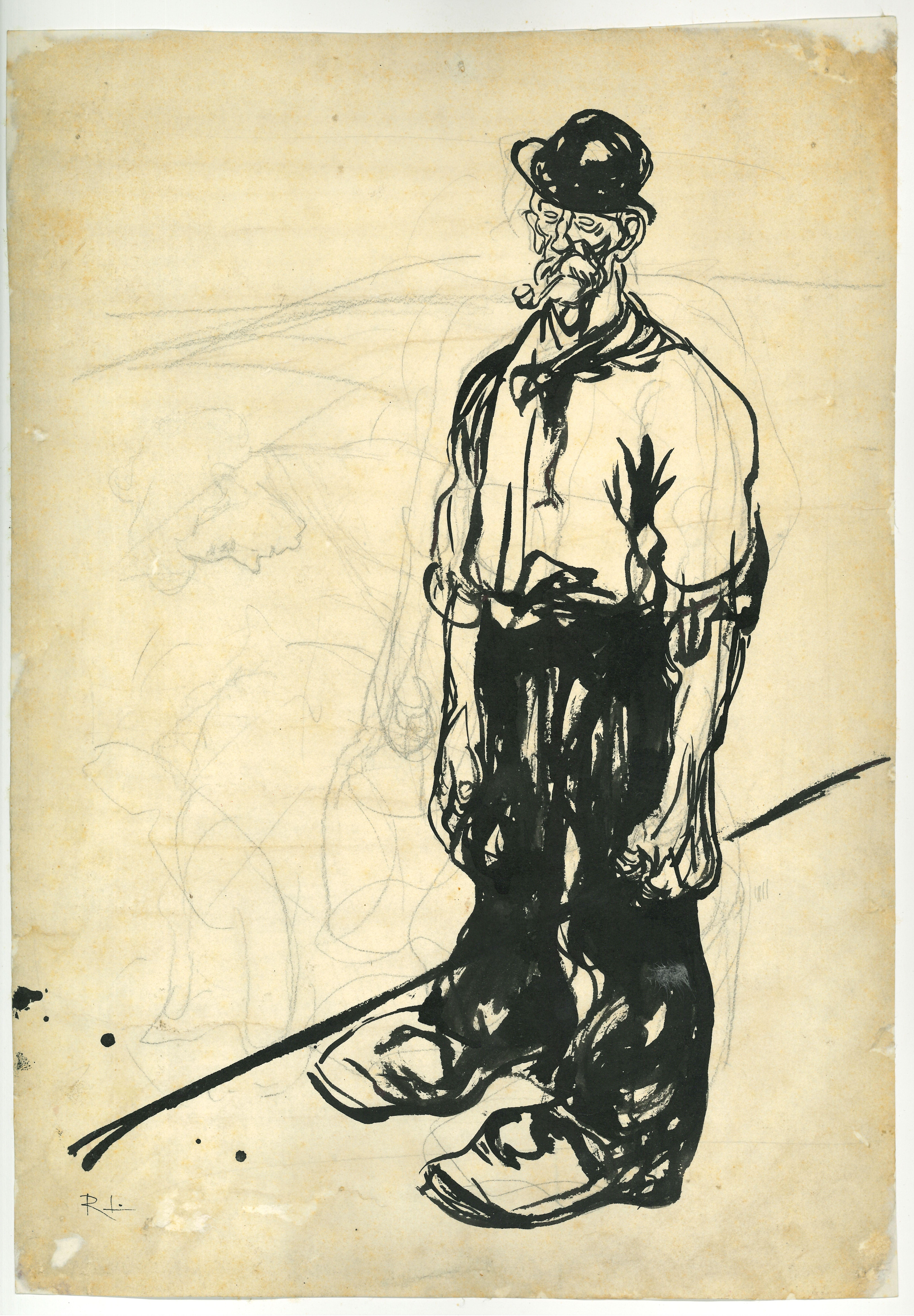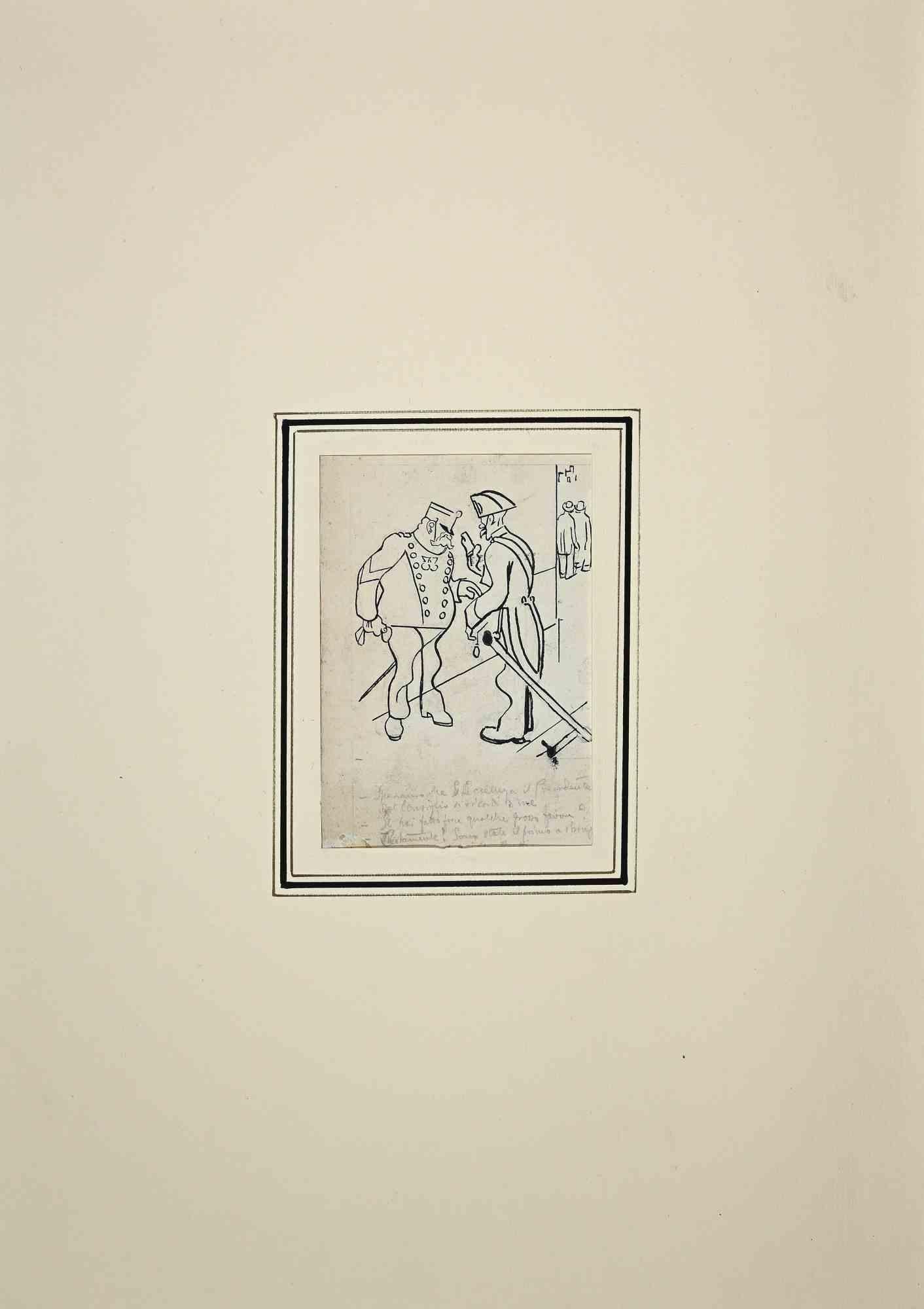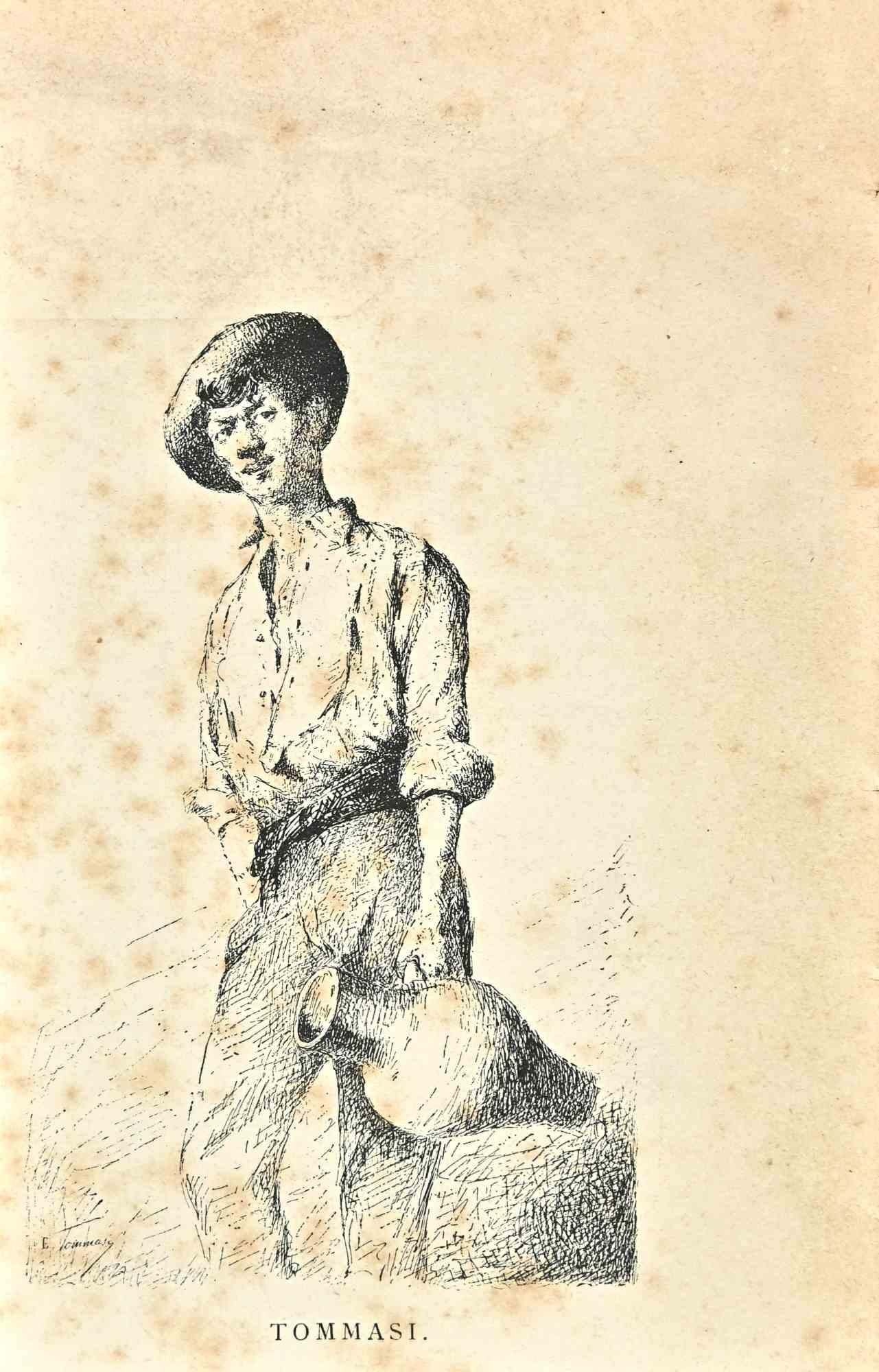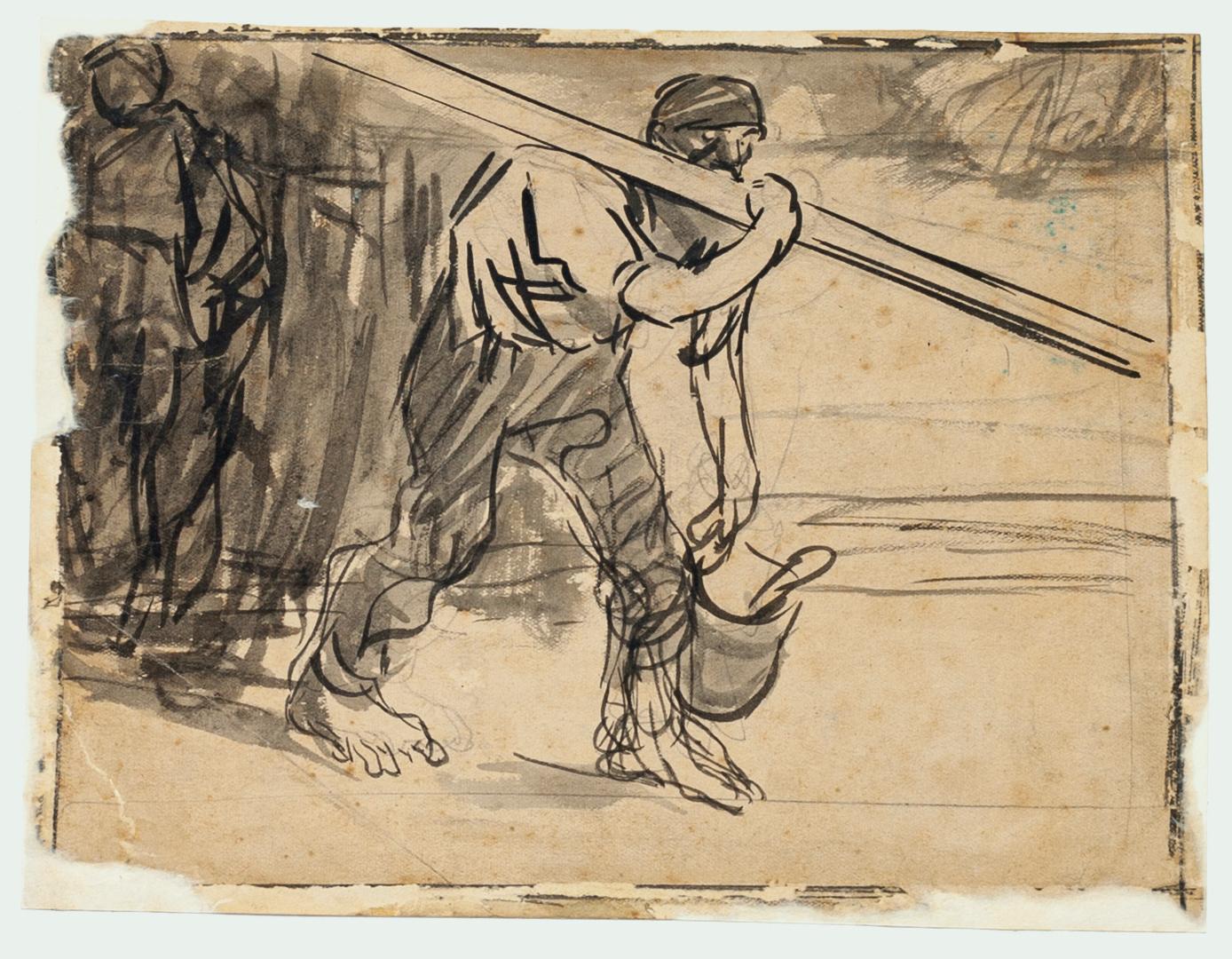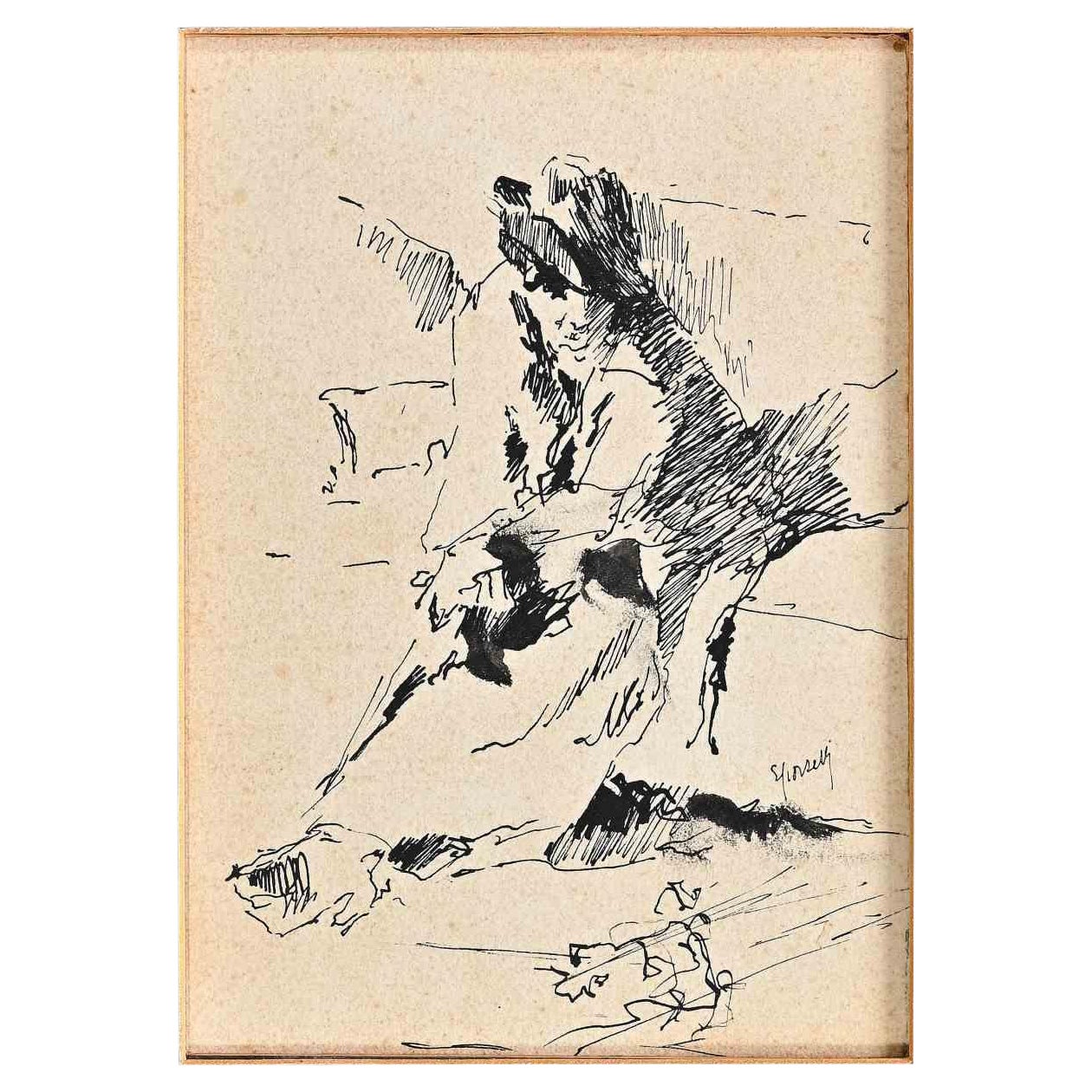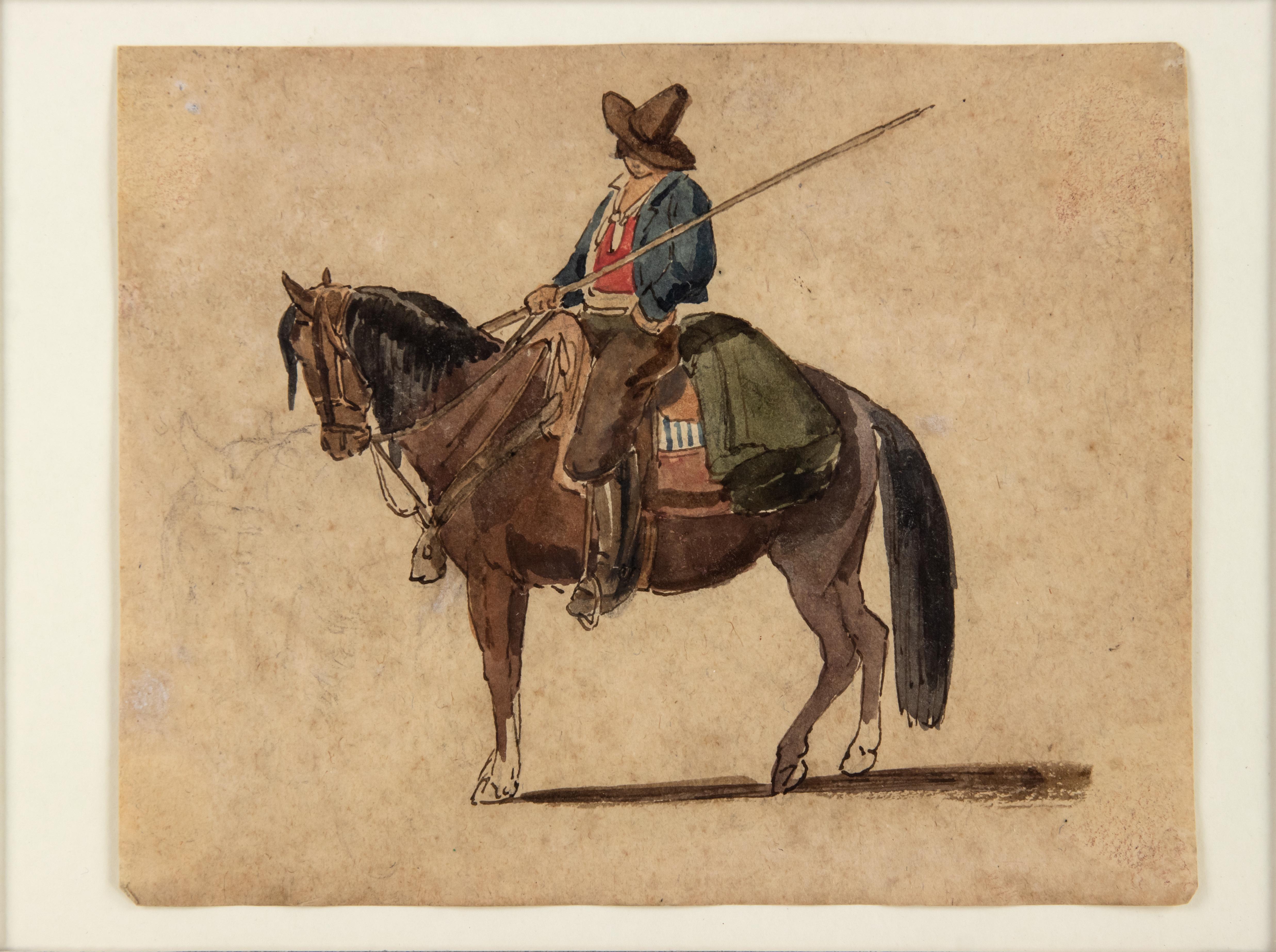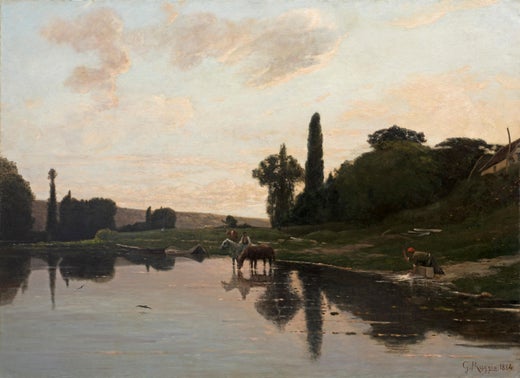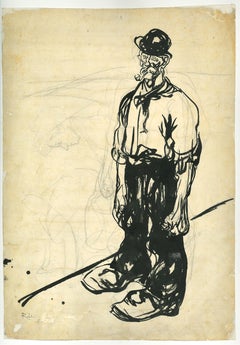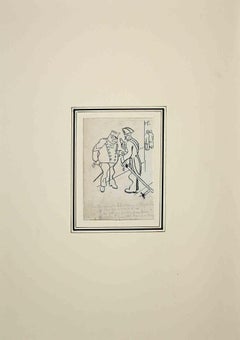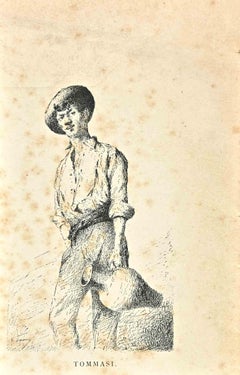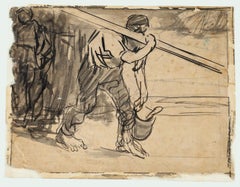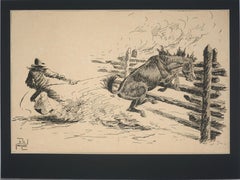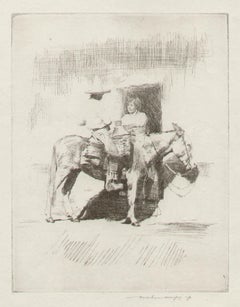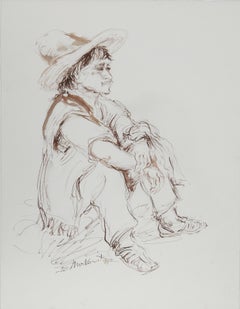Items Similar to Il Buttero (The Cowboy) - Ink and White Lead by Giuseppe Raggio - 1920 ca.
Want more images or videos?
Request additional images or videos from the seller
1 of 2
Giuseppe RaggioIl Buttero (The Cowboy) - Ink and White Lead by Giuseppe Raggio - 1920 ca.1910 ca.
1910 ca.
$2,134.07
£1,597.12
€1,800
CA$2,944.14
A$3,274
CHF 1,719.58
MX$40,027.98
NOK 21,427.59
SEK 20,200.43
DKK 13,702.49
About the Item
Beautiful ink drawing and white lead by Giuseppe Raggio, probably belonging to his last years of artistic activity.
Good conditions.
This artwork is shipped from Italy. Under existing legislation, any artwork in Italy created over 70 years ago by an artist who has died requires a licence for export regardless of the work’s market price. The shipping may require additional handling days to require the licence according to the final destination of the artwork.
- Creator:Giuseppe Raggio (1823 - 1916, Italian)
- Creation Year:1910 ca.
- Dimensions:Height: 7.88 in (20 cm)Width: 11.62 in (29.5 cm)Depth: 0.08 in (2 mm)
- Medium:
- Movement & Style:
- Period:
- Condition:Insurance may be requested by customers as additional service, contact us for more information.
- Gallery Location:Roma, IT
- Reference Number:Seller: J-452071stDibs: LU65034312652
Giuseppe Raggio
Giuseppe Raggio was born in Chiavari and while his father wished him to join the merchant marine, by 1845, he had decided to study painting and participated in his first exhibition in Genoa. Raggio enrolled in the Accademia di Belle Arti of Florence, where he studied under the neoclassical painter Giuseppe Bezzuoli.
About the Seller
4.9
Platinum Seller
Premium sellers with a 4.7+ rating and 24-hour response times
1stDibs seller since 2017
7,682 sales on 1stDibs
Typical response time: 3 hours
- ShippingRetrieving quote...Shipping from: Roma, Italy
- Return Policy
Authenticity Guarantee
In the unlikely event there’s an issue with an item’s authenticity, contact us within 1 year for a full refund. DetailsMoney-Back Guarantee
If your item is not as described, is damaged in transit, or does not arrive, contact us within 7 days for a full refund. Details24-Hour Cancellation
You have a 24-hour grace period in which to reconsider your purchase, with no questions asked.Vetted Professional Sellers
Our world-class sellers must adhere to strict standards for service and quality, maintaining the integrity of our listings.Price-Match Guarantee
If you find that a seller listed the same item for a lower price elsewhere, we’ll match it.Trusted Global Delivery
Our best-in-class carrier network provides specialized shipping options worldwide, including custom delivery.More From This Seller
View AllFarmer - Original Drawing by G. Galantara - 1909
By Gabriele Galantara
Located in Roma, IT
Farmer is an original China ink drawing by Gabriele Galantara (April 4, 1909).
The artwork is in good conditions mounted on a white cardboard passpartout (50x35).
Gabriele Galanta...
Category
1910s Figurative Drawings and Watercolors
Materials
Ink
Sketch for "L'Asino" - Original Drawing by Gabriele Galantara - 1910
By Gabriele Galantara
Located in Roma, IT
Sketch for "L'Asino" is an original drawing in China Ink on paper by Gabriele Galantara in 1910.
Good Conditions.
The Artwork is Depicted through strong strokes in a well-balanced ...
Category
1910s Modern Figurative Drawings and Watercolors
Materials
Ink
Peasant - Lithograph by Enrico Tommasi - Late-19th Century
Located in Roma, IT
Peasant is a lithograph realized by Enrico Tommasi in the Late 19th Century.
Good conditions.
Signed on Plate.
The artwork is depicted through soft strokes in a well balanced comp...
Category
Late 19th Century Modern Figurative Prints
Materials
Lithograph
Worker - Ink and Pencil Drawing by G. Galantara - Early 20th Century
By Gabriele Galantara
Located in Roma, IT
Worker is an original drawing in pencil and watercolor realized by Gabriele Galantara, the state of preservation of the artwork is good and aged, applied on white cardboard.
Image d...
Category
Early 20th Century Figurative Drawings and Watercolors
Materials
Pencil, Ink
Figure of Man - Ink Drawing by Eugenio Scorzelli - Early 20th Century
Located in Roma, IT
Figure of Man is a China Ink Drawing realized by Eugenio Scorzelli (1890-1958).
Good condition, included a grey cardboard passpartout (33.5x27.5 cm).
Hand-signed by the artist on t...
Category
Early 20th Century Modern Figurative Drawings and Watercolors
Materials
Paper, Ink
A Cowboy on the Horse - nk and Watercolor by C. Coleman - Late 1800
Located in Roma, IT
Nice ink and watercolor by Carlo (Charles) Coleman, an english born painter who worked in Italy for most of his life and in well known for his bucolic and animal representations.
Fai...
Category
Late 19th Century Naturalistic Figurative Drawings and Watercolors
Materials
Ink, Watercolor
You May Also Like
Nineteenth-century Coachman - Ink drawing - 1916
By Georges Conrad
Located in Paris, IDF
Georges CONRAD (1874-1936)
Nineteenth-century Coachman
Original India ink and pencil drawing
Signed with the stamp of atelier
On paper 26.5 x 20 cm (c. 10,4 x 7.8 in)
Very good co...
Category
1910s Academic Figurative Drawings and Watercolors
Materials
India Ink
Original Mid Century Western Pen and Ink "Cowboy and Bronco"
Located in Soquel, CA
Original Mid Century Pen and Ink on Paper "Cowboy and Bronco" Western Genre
Compelling pen and ink western picture of Cowboy wrangling the bro...
Category
1950s American Realist Figurative Paintings
Materials
India Ink, Laid Paper
$2,000 Sale Price
20% Off
Mexican on a donkey, Mexico, Mortimer Menpes etching with drypoint, 1914
By Mortimer Menpes
Located in Melbourne, Victoria
Signed in pencil below the image. Signed and dated in the plate. The number '327' inscribed in pencil in lower margin.
Mortimer Menpes was an artist and engraver, author, printmake...
Category
Early 20th Century Naturalistic Landscape Prints
Materials
Engraving
Man in Sombrero - III, American Realist Ink on Paper by Ira Moskowitz
By Ira Moskowitz
Located in Long Island City, NY
Ira Moskowitz, Polish/American (1912 - 2001) - Man in Sombrero - III, Year: circa 1989, Medium: Ink on Paper, signed, Size: 13 in. x 10 in. (33.02 cm x 25.4 cm), Description: Weari...
Category
1980s American Realist Portrait Drawings and Watercolors
Materials
Ink
Man in Sombrero - I, American Realist Ink on Paper by Ira Moskowitz
By Ira Moskowitz
Located in Long Island City, NY
Ira Moskowitz, Polish/American (1912 - 2001) - Man in Sombrero - I, Year: circa 1989, Medium: Ink on Paper, signed, Size: 13 in. x 10 in. (33.02 cm x 25.4 cm), Description: Ira Mos...
Category
1980s American Realist Portrait Drawings and Watercolors
Materials
Ink
20th century engraving figurative print interior dramatic black and white signed
By Auguste Brouet
Located in Milwaukee, WI
"Les Emigrants" is an original roller engraving by Auguste Brouet. The artist signed the piece lower right and wrote the edition number (30/50) lower left. This engraving depicts a f...
Category
Early 1900s Modern Figurative Prints
Materials
Engraving
More Ways To Browse
Antique Cowboy
Cowboy Drawing
Cowboy Watercolor
Large Figurative Paintings
Original Line Art
Whimsical Art
Green Abstract Art Paint
19th Century Signed Paintings
Black Background Paintings
Etching Plate
Paintings With Hearts
Tree Of Life Art
Painting 1995
Reproduction Art
Italian Love Art
Window Frame
Signed Picasso
E Paintings
